Knowing things, especially when it comes to breast health, is empowering – it may quite literally save lives. An important diagnostic tool in the finding and checking of early-onset breast problems, a many women feel worried and unsure when they hear the words that tell them they need a diagnostic mammogram.
A diagnostic mammogram is a more detailed test done when something suspicious is found, for example, an unusual lump, nipple discharge, or an unclear spot from a previous screening. It’s hard to wait for answers; therefore, knowing what to expect brings about a lot of comfort. Let’s explain how a diagnostic mammogram process goes and look at everything from the first test to the advanced tools that aid in making accurate diagnoses possible.
In comprehensive guide, we will explain what happens during a diagnostic mammogram, how specialists read the results and what may be the next steps. Understanding breast health is vital, especially when early detection can make a significant difference. Learn more about breast cancer causes, symptoms, and treatment to empower yourself or support someone you care about here. Whether this is your first diagnostic mammogram or you’re assisting someone else, this information will help you understand the process clearly and confidently.
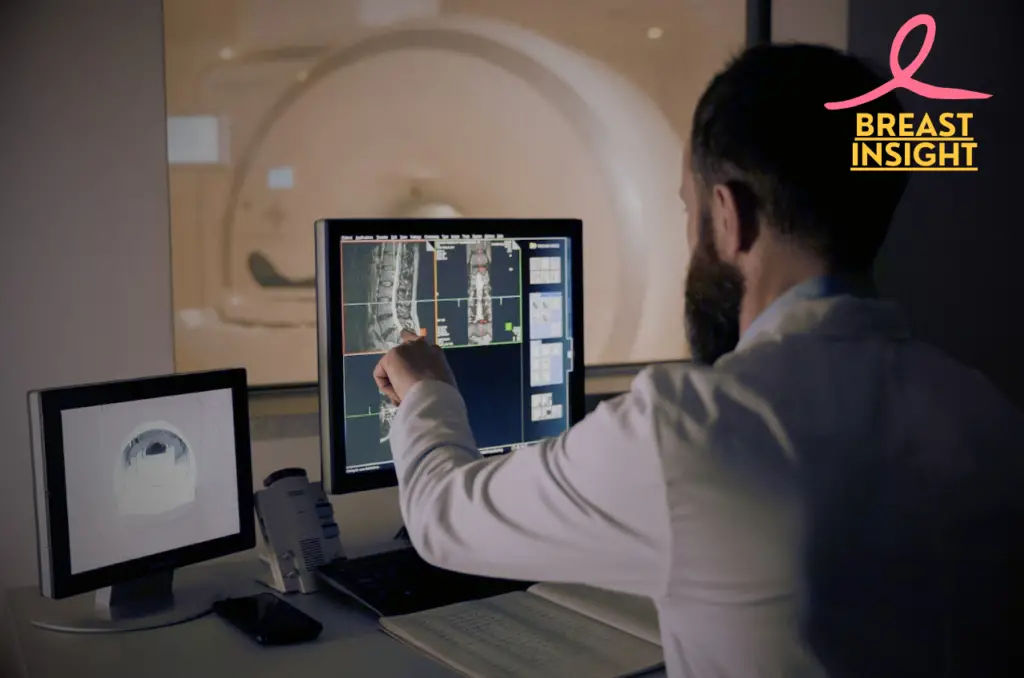
Understanding Diagnostic Mammograms
Comparison of Screening and Diagnostic Mammograms
Diagnostic mammogram is quite distinct from a screening mammogram in a lot of aspects. Here is the comparison in detail:
| Feature | Screening Mammogram | Diagnostic Mammogram |
| Purpose | Routine check for asymptomatic women | Investigate specific breast concerns |
| Duration | 15-20 minutes | 30-60 minutes |
| Image Count | Standard 4 views | Multiple detailed views |
| Radiologist Presence | Reviews images later | Often present during exam |
When Diagnostic Mammograms are needed
Several specific situations mandate diagnostic mammograms. These include:
- Detection of a breast mass or lump during breast self-examination
- Abnormal breast pain or abnormal nipple discharge
- Changes in breast size or shape
- Follow-up analysis of an abnormal screening mammogram
- Tracking and monitoring changes in breasts in patients who have been previously detected with breast cancer
- Assessment of breast implants or dense breast tissue
- Evaluation of skin changes or nipple retraction
Imaging Views Used
Diagnostic mammograms employ specialized views to thoroughly examine areas of concern:
Compression Views:
- Spot compression for zooming in on specific areas
- Paddle compression to adequately spread apart the tissue
Magnification Views:
- Detailed inspection of calcifications
- Improved resolution for tissue structure
Lateral Views:
- Mediolateral oblique (MLO) views
- True lateral views for locating a mass precisely
Additional Angles:
- Rolling views to distinguish actual masses from tissue overlap
- Exaggerated views for better visualization of peripheral breast tissue
These special views let radiologists look at suspicious areas from different angles, giving clear information about breast problems. The mix of different views helps tell the difference between harmless and possibly harmful findings, leading to more accurate diagnoses.
Now that you know the basics about diagnostic mammograms, it’s important to understand the broader impact of breast health on your life. Discover how breast cancer can affect intimacy and explore solutions for a fulfilling life after diagnosis here. Here’s how you get one, what to expect during this process, and how to prepare for it.

The Diagnostic Mammogram Procedure
Pre-examination Preparation
Patients before attending to a diagnostic mammogram have essential preparation steps:
- Avoid application of deodorants, perfumes, or powders on the breast
- Wear a two-piece clothing to facilitate easier dressing
- Be prepared with previous mammography films in case done at another facility
- During the examination, inform the technologist about signs and changes associated with the breast
- Report new pregnancies or possible pregnancy
Procedure for the Diagnostic Mammogram
A diagnostic mammogram requires a structured process of acquisition of high-resolution images of the breast:
- Initial positioning and compression
- Multiple specialized views from various angles
- Spot compression of suspect areas
- Magnification views if necessary
| View Type | Purpose | Duration |
| Standard Views | Overall breast assessment | 5-10 minutes |
| Spot Compression | Focus on specific areas | 3-5 minutes |
| Magnification | Detailed calcium examination | 3-5 minutes |
| Additional Views | Problem-solving | 5-10 minutes |
Time and Comfort Interventions
The entire examination process typically takes 30-45 minutes, three to five times longer than a screening mammogram that takes 15-20 minutes. To make the experience as comfortable as possible:
- Schedule during least sensitive menstrual cycle time
- Take an over-the-counter pain medicine ahead of time
- Talk to technologist about what’s uncomfortable
- Use warm drapes provided for comfort
- Take breaks between compressions if necessary
Additional Imaging Techniques
Based on preliminary results, the above supplemental imaging techniques can be used:
- Tomosynthesis (3D mammography)
- Spot paddle compression views
- Roll views for better mass visualization
- Exaggerated craniocaudal views
- Lateromedial views
These specific views assist radiologists to get detailed information about the suspicious regions. Each supplementary view gives it a different look with more elaborate details that assist in proper diagnosis.
During the examination, the technologist collaborates with the radiologist who could view images immediately and request certain additional views. Such immediate review ensures that all needed images are acquired in one visit, so there is minimal need for return visits. Next comes the vital process of careful analysis and interpretation by trained radiologists of these detailed images. For those diagnosed with advanced conditions, understanding treatment options and survival prospects is crucial. Learn more about Stage 4 breast cancer signs, treatments, and survival strategies here.
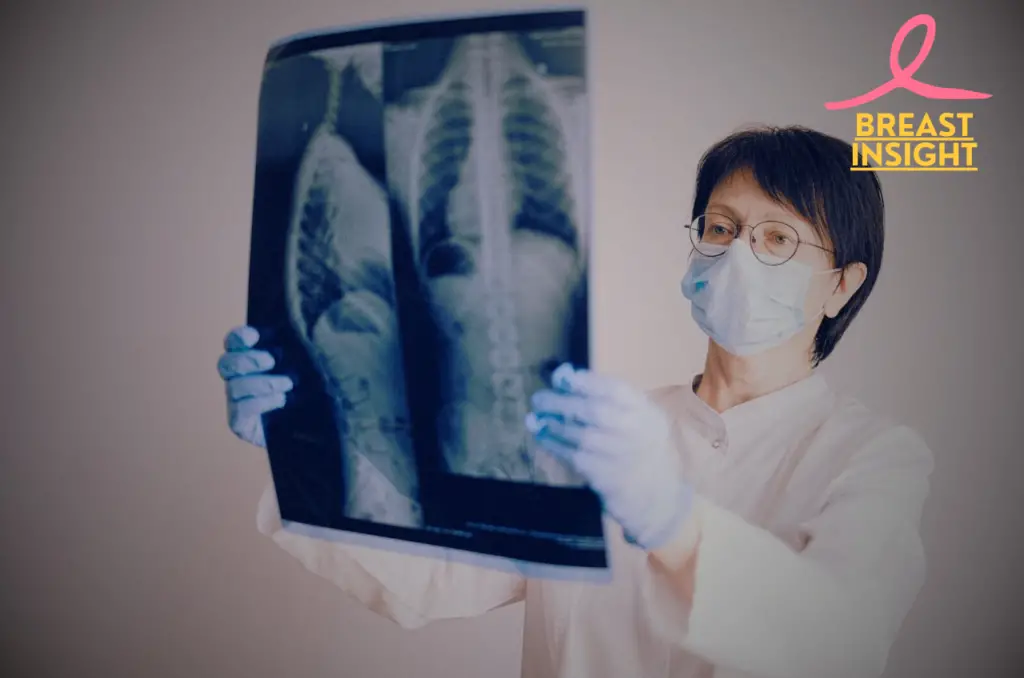
Reading and Interpreting Results
Role of radiologists
Radiologists are the primary professionals who review the diagnostic mammogram images. They undergo many years of specialized training to identify even small abnormalities. These experts examine various views of the breast tissue and compare the existing images with prior mammograms to identify any changes or suspicious patterns.
The main jobs of radiologists are:
- Image quality and positioning analysis
- Detecting and explaining suspicious areas
- Comparing bilateral symmetry
- Documenting the size, location, and characteristics of findings
- Suggesting more imaging when needed
BI-RADS Scoring System
The Breast Imaging-Reporting and Data System (BI-RADS) provides a clear way to classify mammogram results. This includes the seriousness of the findings and what actions should be taken through a scale from 0 to 6.
| BI-RADS Category | Assessment | Recommended Action |
| 0 | Incomplete | Additional imaging needed |
| 1 | Negative | Routine screening |
| 2 | Benign | Routine screening |
| 3 | Probably benign | Short-term follow-up |
| 4 | Suspicious | Biopsy recommended |
| 5 | Highly suspicious | Biopsy required |
| 6 | Known cancer | Treatment planning |
Common Observations and What They Indicate
Radiologists commonly find various types of results while interpreting mammograms:
Masses:
- Most often, clear borders present friendly conditions
- Sharp or jagged edges may indicate cancer
- Size and density differences from previous images
Calcifications:
- Macrocalcifications: Usually are benign appearing as large white dots
- Microcalcifications: Tiny white spots that might be cancer, when they appear in clusters
Architectural Distortion:
- Irregular tissue shapes
- Pulling or stretching of tissue
- Could show growing lumps
Asymmetries:
- Focal: In one view, observable
- Global: Different tissue density between breasts
- Developing: New asymmetry compared to previous images
Understanding these patterns helps doctors who use X-rays and scans make correct judgments and good suggestions for future care. After this detailed analysis is done, advanced tools can be used to look deeper into any concerning results. For a proactive approach to breast health, explore the steps of breast self-examination to better understand your body and catch early warning signs here.
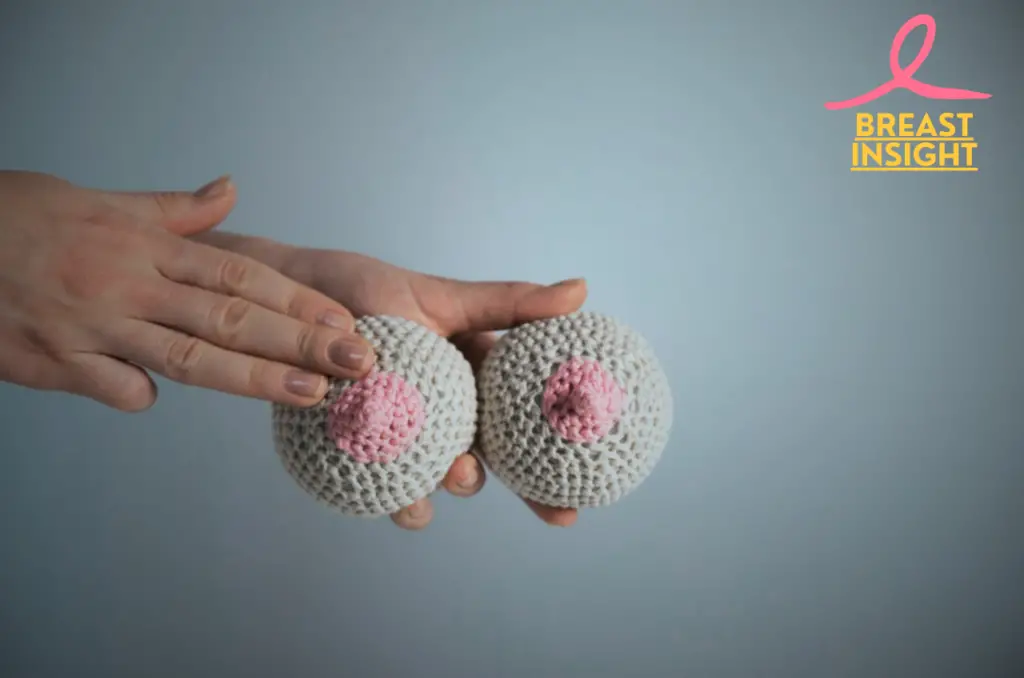
Advanced Diagnostic Technologies
Digital Breast Tomosynthesis (3D Mammography)
Digital breast tomosynthesis is the newest mammography technology to give a clear three-dimensional picture of breast tissue. A key advancement over traditional 2D mammograms, this technology takes many pictures from various angles, so doctors can examine breast tissue one layer at a time. This view lets doctors better identify cancer and reduces false positives by 40% and raises cancer detection rates by 29%.
Computer-assisted detection (CAD)
CAD systems use artificial intelligence to help radiologists find possible problems. This technology works like a second pair of eyes, highlighting areas that need more attention. Important benefits include:
- Increasing the detection accuracy by 20%
- Less reading time for the radiologists
- Consistent analysis patterns
- Better early detection of tiny calcium deposits
Contrast-Enhanced Mammography
This innovative technique combines traditional mammography with intravenous contrast material to highlight areas of increased blood flow, which often indicate tumor growth.
| Feature | Benefit |
| Enhanced visibility | Better visualization of lesions |
| Lower cost | More affordable than breast MRI |
| Faster procedure | Complete examination in 7-10 minutes |
| Higher sensitivity | Improved detection in dense breast tissue |
Combining with Other Imaging Methods
Today, modern diagnostic facilities use integrated imaging methods, which combine different technologies for a thorough breast assessment:
- ABUS (Automated Breast Ultrasound)
- Magnetic Resonance Imaging (MRI)
- Molecular Breast Imaging (MBI)
- Positron Emission Mammography (PEM)
Recent Technology Advances
New advances are revolutionizing how breast cancer is detected and treated:
- Artificial Intelligence-based image analysis
- Photoacoustic mammography
- Dedicated breast CT scanning
- Real-time elastography image
New technologies give excellent results in the early detection of the disease, especially in cases of women with tissue. Application of different types of imaging aided by artificial intelligence and machine learning implies quite precise diagnoses of breast cancer.
Now that we considered these advanced technologies, let’s check the important follow-up steps that may be required depending on the test results. For a deeper insight into navigating metastatic breast cancer, explore this guide on 5 critical steps for better care and management.

Follow-up Steps
Understanding Your Results
The BI-RADS (Breast Imaging-Reporting and Data System) standardized categories that results from diagnostic mammograms usually fall into:
| BI-RADS Category | Meaning | Typical Follow-up |
| Category 0 | Incomplete | Additional imaging needed |
| Category 1 | Negative | Routine screening |
| Category 2 | Benign | Routine screening |
| Category 3 | Probably benign | Short-term follow-up |
| Category 4 | Suspicious | Biopsy recommended |
| Category 5 | Highly suspicious | Biopsy required |
Supplementary Testing Requirements
Depending on your first mammogram report, the physician will have some more tests for you.
- Targeted ultrasound
- Breast MRI
- Contrast mammography
- Core needle biopsy
- Stereotactic biopsy
The choice of more tests depends upon the following:
- The nature of the suspicious finding
- Breast tissue density
- Personal Risk Factors
- Family history
- Previous breast imaging history
Creating a Care Plan
Your personalized care plan will be developed based on the comprehensive evaluation of all test results. Key components typically include:
- Time of follow-up imaging
- Number of clinical breast examinations
- Recommendations for lifestyle adjustments
- Risk reduction strategies
- If needed, genetic counseling
For patients who need regular check-ups, healthcare providers often make a clear schedule;
| Time Frame | Recommended Actions |
| 3 months | Follow-up imaging for BI-RADS 3 findings |
| 6 months | Short-term follow-up mammogram |
| 1 year | Annual diagnostic mammogram |
| 2+ years | Return to routine screening schedule |
The care plan will alter if new information or changes in the breast health occur. Patients with non-cancerous results will be focused on regular screening appointments and keeping an eye on their breasts. Patients undergoing biopsies or more treatment will receive clear instructions about what they need to do next and what is available in terms of treatment.
Now that you know the aftercare, be in regular contact with your health care team and follow through on the recommended schedule of exams and tests. For further details on ensuring early detection and the importance of regular screenings, visit this guide on 5 essential breast cancer screenings for proactive breast health management.
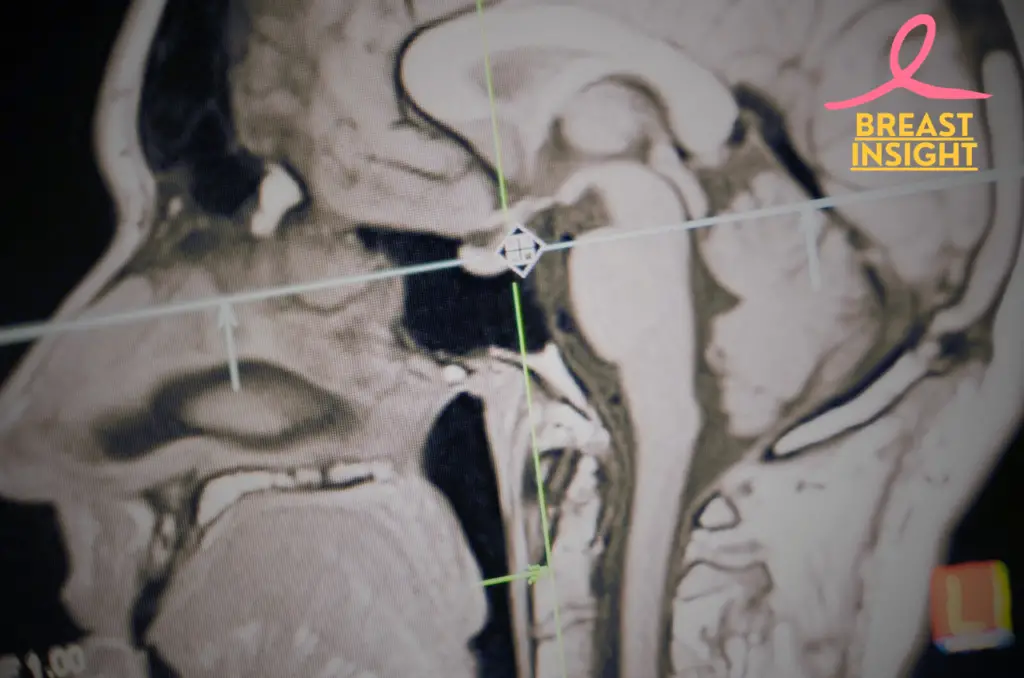
Conclusion
Finding and diagnosing breast cancer is of utmost importance. Today, it is an extremely important resource in advanced healthcare, from the first mammography examination to high-tech imaging techniques and expert evaluation of results, these special X-rays provide crucial information that helps shape decisions regarding treatment and even save lives.
As you are getting a diagnostic mammogram or just simply interested in knowing more about this important medical test, then remember, the more you know, the better. Discuss your concerns with your healthcare provider and ask questions as to how it works, so as to stick to the recommended rules of screening to take care of your breast health today in really improving your future.
Frequently Asked Questions (FAQs)
What is the difference between a diagnostic mammogram and a screening mammogram?
A diagnostic mammogram is done for specific signs or abnormal screening mammogram results. Screening mammography is done routinely in asymptomatic women to detect breast cancer. Additional images are obtained in the diagnostic mammograms, and sometimes an area of interest is compressed to better visualize the suspicious area.
How often should I get a diagnostic mammogram?
The frequency of diagnostic mammograms depends on individual risk factors, personal or family history of breast cancer, and previous mammogram results. Generally, women with a higher risk of breast cancer may need more frequent imaging. It is essential to consult your healthcare provider to determine the appropriate schedule based on your unique situation.
Are there any risks associated with diagnostic mammograms?
Diagnostic mammograms are generally safe but do use very small amounts of radiation. Early detection of breast cancer usually outweighs the risks involved. There is, however always a possibility for false positives or false negatives which may cause worry or additional diagnostic tests. Discuss your concerns with your doctor and receive advice right for you.
What should I do if I receive abnormal results from a diagnostic mammogram?
If you do get abnormal results during a diagnostic mammogram, you must discuss them with your doctor about getting further tests. These may include extra imaging or maybe a biopsy to better understand the results. This is good management, and it basically boils down to having peace of mind when you understand what’s going on with your treatment plan.
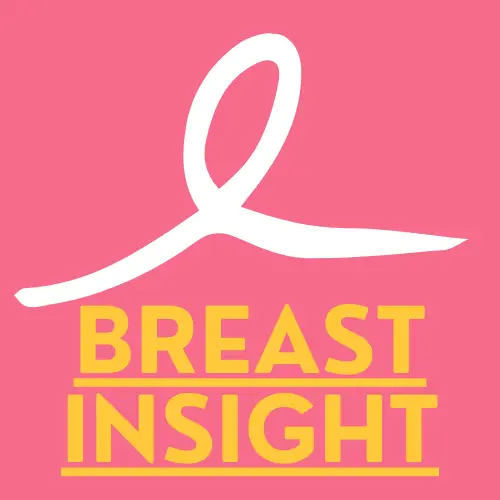
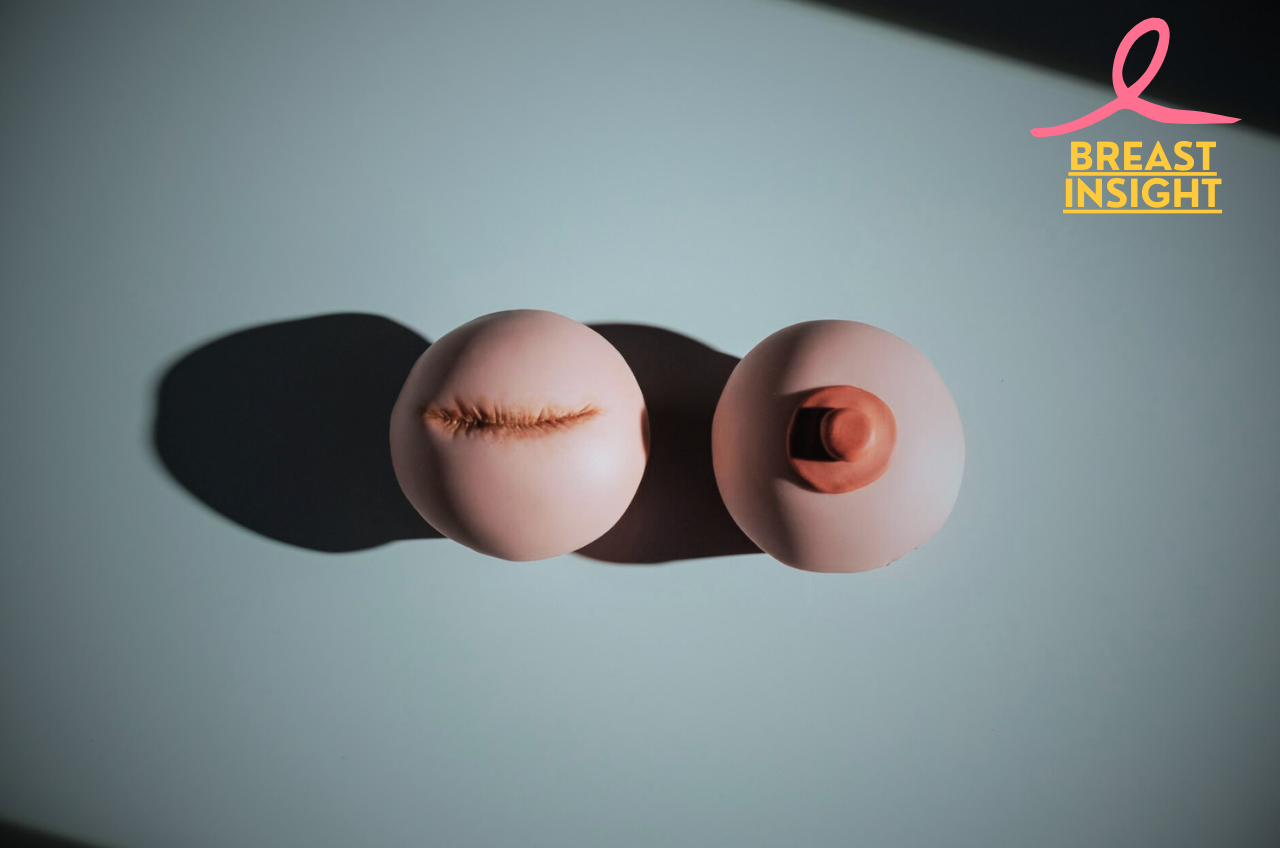
2 thoughts on “5 Facts About Diagnostic Mammograms That Could Save Your Life”